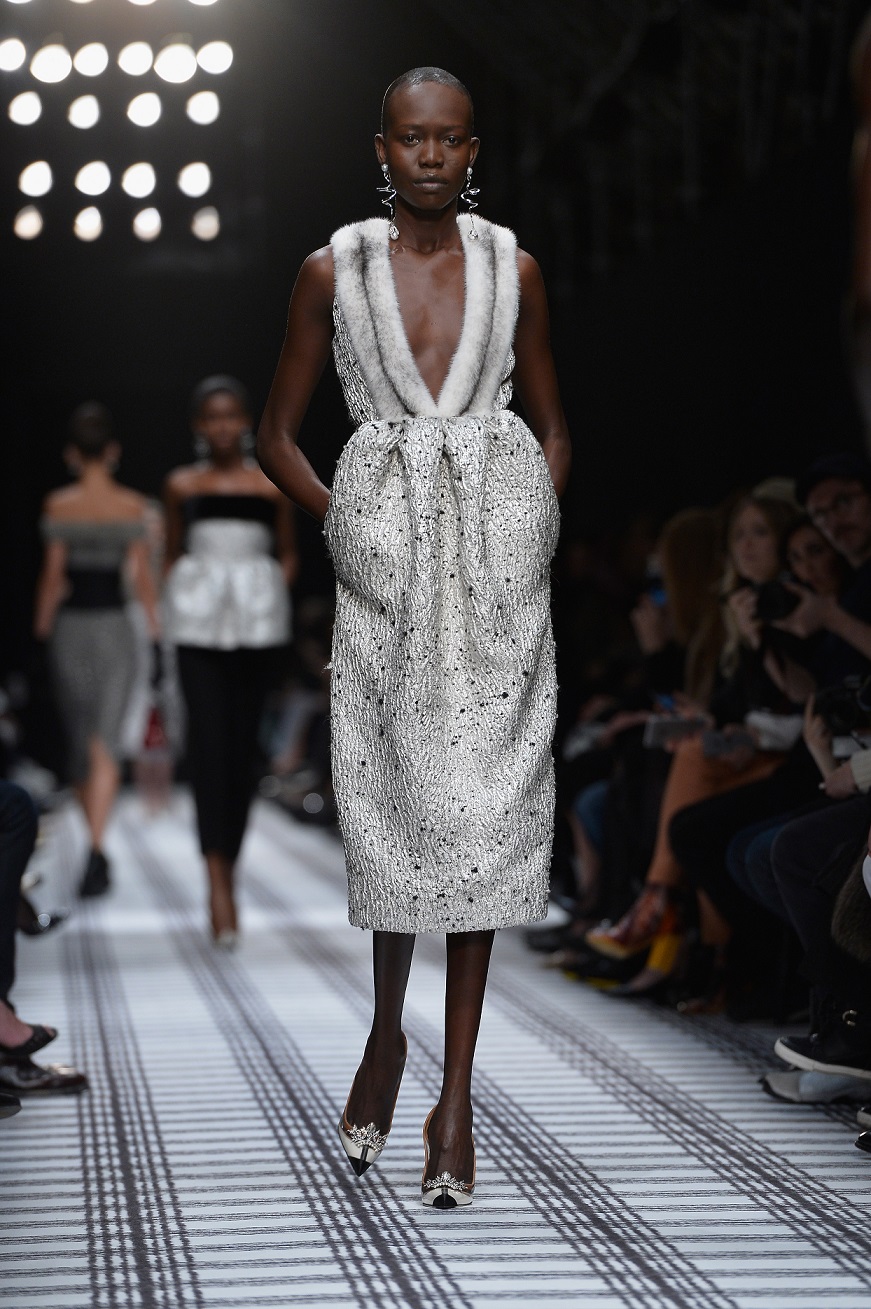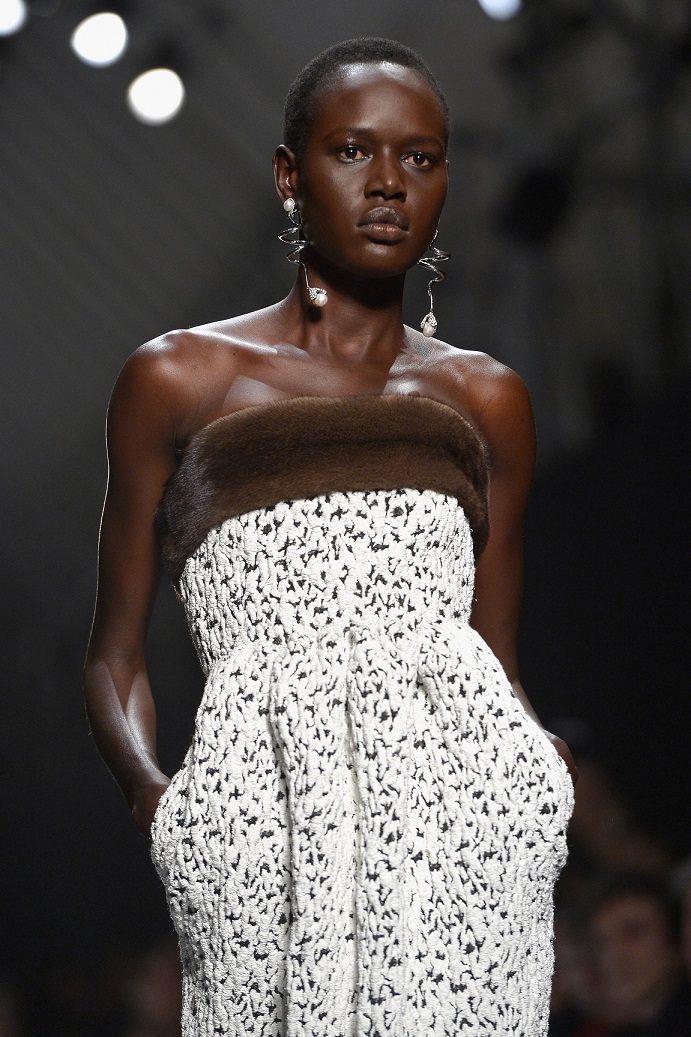Africa-inspired fashion has been in vogue for a while now. But what’s new is that black models are starting to be treated just like every other model on the catwalk. Is this a sign that the fashion industry is waking up to the fact that black women make money… and they like to spend it too?
Africa, as a continent, counts over 100 non-political multi-millionaires. Multi-millionaires are people who have amassed a sum up to but not over a US $900 million, according to Webster’s dictionary. We also count 26 legitimate billionaires. Those are people who have amassed more than a million times US $1,000,000. The mind boggles, I know.
After decades and decades of open post-colonial conflict, we’re currently enjoying a slightly more tranquil period – for the most part – in our continent’s modern history and the subsequent economic boom linked to legitimate trade and technology as well as an electronics sector that is growing fast.
We’re predicted to expand in numbers to a staggering 4 billion by 2050 or 25% of the world’s population (beat that, China), a third of which will be made up of middle-class citizens. Forbes called this ‘the greatest change of our time’. Highways, luxury cars, restaurants, hotels, large homes, vacations abroad and home tourism are on the rise sharply, and with that, our visibility.
https://instagram.com/p/8icwqmvt8J/?taken-by=maisonvalentino
African cultures, dress, hairstyles, and tribal themes being used in fashion aren’t new. For the S/S 16 season, Valentino used West African masks and music as a backdrop. And we could be mad about this, but what’s the point? The aesthetic rape of Africa seems to be one of the Western world’s favourite hobbies; our rich cultures are to be the gift that keeps on giving. To them.
Black women have always been marginalised by the fashion industry at large, both inside and outside.
Black women have always been marginalised by the fashion industry at large, both inside and outside. In high-end luxury shops, it is still a rarity to see sales associates of colour because the image of us has never been associated with wealth, good taste, or fashion. Black women especially. Black African women, don’t even mention it.
There are moments when it feels like that’s changing. Imagine my surprise when in a quiet, unassuming manner, the fall/winter 2015 Balenciaga show was opened, centred and closed with black models. Big whup? Yeah, maybe you’re right. But there was nary a shadow of Naomi Campbell. AND, ye gods, not a single wig was used! These were unknown black and mixed-race models from the US, Africa, Europe.

I know, you’re wondering why I’m excited about this. Let me break it down for you: these girls were used in the exact same way their Russian counterparts or Chinese counterparts are used. So that the women of those countries or women identifying with those ethnicities can see how the clothes look on someone of their complexion. He was sending a message that his Balenciaga wanted black women in their clientele, too.
A great shift has begun, in grand part thanks to social media.
For the S/S 2016 summer shows, the ‘trend’ continued. In this vein, a great shift has begun, in great part thanks to social media (mainly Instagram), which is introducing us to the many black faces behind the gilded curtains of the fashion industry. We’re now able to see bloggers, editors, buyers, designers and more at work moving and shaking the black fashion image: from the legendary Ms Bethann Hardison (who runs Vogue Italia’s Black page) to the lovely and generous Shiona Turini (who’s worked at American Cosmo, after tours with Teen Vogue and Tom Ford) and Pat McGrath (make up artiste extraordinaire to alllll the big fashion houses) and Edward Enninful (W Magazine’s fashion director). We can look at Instagram and see what they’re doing, who they follow, what they’re working on and most importantly that those of us who aspire to the upper echelons of fashion – but are more melanated than the competition – can make it there.
https://instagram.com/p/7tsMfHNxOY/?taken-by=shionat
https://instagram.com/p/8TVGA2lslR/?taken-by=patmcgrathreal
It’s worth note that African-American women are earning more and spending it in luxury items. The West has finally opened their eyes to the fact that millionaires and billionaires are black, too. And they dress the part. We’ve gone from cleaning the boardrooms to running them in a very short space of time, but it seems the general global culture has yet to catch up. But I ask you this; how much money do you think the Real Housewives of Atlanta have contributed to Christian Louboutin’s quest to become the king of shoes? And with them, there are many legion of US women (me included; he should give me shares in his future IPO, given the number of shoes I’ve bought).
No insane twerking and crumping moves like at Rick Owens (and they didn’t have to carry the white models, either – I see you, Rick!).
But back to Balenciaga and the show progression this season. The most interesting and encouraging thing about this catwalk is the way the girls were styled – just like the others. No fetishisation of their natural hair like at Prada. No booty shorts like at Moschino. No insane twerking and crumping moves like at Rick Owens (and they didn’t have to carry the white models, either – I see you, Rick!). Those with long hair wore a chignon like the other girls; those with short hair wore it combed back or left in its natural state. Natural make-up, no Jean-Paul-Gaultier shenanigans, elegant pearl earrings and chic handbags. Celine, Balmain, Burberry, Michael Kors, Miu Miu, Prada, Etro, Pucci and more all used newer, unknown models of colour in a very unassuming way this season.

It was the antithesis of the overtly, if not vulgarly, sexy 80s inspired black goddess that Olivier Rousteing has been serving like hot cookies at Balmain for the past five seasons.
https://instagram.com/p/8TW2AkQRCj/?taken-by=officialjdunn
This was not a one-off occurrence, and a sign that the fashion world is starting to include more women of colour – something they haven’t done since the 1980s and 90s when the American consumer was the largest and most conspicuous and therefore exigent that she be represented at 360 degrees. This included black women, which the magazine and runway shows did frequently and without much fanfare.
Do they NOT know that black women pride ourselves in our appearance and have great skill at dressing.
And yet a curious fact remains in the heart of the African diaspora… no large luxury brands are investing in us – outside of black-driven hair and beauty brands and outside of the territory of South Africa. Is that because there isn’t enough interest? Do they NOT know that black women pride ourselves in our appearance and have great skill at dressing, like their Japanese clients? Because if ever they’re at a loss, they should speak to Tommy Hilfiger, who amassed the bulk of his fame and fortune in the 90s dressing hip hop stars and selling undies much cooler than Calvins to Montell Jordan, Aaliyah, Missy Elliott and the godfather, Tupac Shakur. And why are WE not investing in ourselves? Why do we not have fashion weeks and shows attended by the greats of fashion journalism?
https://instagram.com/p/7JrMBNto8f/?taken-by=lovefola
On the continent of Africa, if you want to shop in a wonderfully luxurious setting that sells global luxury brands, you have to hop a plane to Lagos, Nigeria and pray that Alara is still open when your Kenya Airways flight gets in. Alara, a multi-label boutique is the only authorised retailer for luxury houses such as Balenciaga, Dior, Christian Louboutin, Manolo Blahnik and others, outside of South Africa.
Are there no good black designers? Are there no home grown models? Silly question, I know, but still.
Ilaria Venturini Fendi, daughter of the great leather goods empire from Rome, started a company called Carmina Campus to recycle junk and have Kenyan women make them into luxury bags, which sell for $1000 a pop. Stella Jean, a half-Haitian and half-Italian designer is winning awards hawking wax print skirts and cowrie shell bracelets at 500 euro a pop… Dear Africa, are you trying to tell me that we’re unable to commercialise ourselves in any way other than chopping off our limbs to sell diamonds to the DeBeers corp?! Is our collective post colonial self-esteem that low? Are there no good black designers? Are there no home grown models? Silly question, I know, but still. And do we have to farm our work, workforce, skills and energies to the West in order to be valid and to feel validated? Really?! As many college graduates, village workers, skilled artisans and starving children as we have… REALLY? We can’t do better? We can’t raise ourselves up? Really?
Why is there not a single Conde Nast investment into what will be the single greatest consumer market in the recorded history of mankind?
Because for every Adele DeJak (Adele DeJak jewellery and accessories) and Gladys Macharia (Loyangalani jewellery) and Chania Lackey (Swaheelies footwear) who start a company in Africa, there are a thousand more who could do it and would do it… if someone only believed and invested in them. We have rappers – we should dress them. We have models – we should use them. We have craftsmen and women – we should employ them.
https://instagram.com/p/2IqJ6KMZ3X/?taken-by=alaralagos
In a world where every single Asian nation has a Vogue and Elle magazine, why is there not a single Conde Nast investment into what will be the single greatest consumer market in the recorded history of mankind, within the next 25 years? Why, more importantly, have we not invested in ourselves and our own visibility? That is the only question worth asking, because as every teenager with a cellphone knows… #representationmatters.
For more lessons in African style, get on your Instagram and look up @lovefola, @soukena, @claireashmeadow, @dianaopoti, @Alaralagos, @malaikafirth, @anaismali, @nanaghana, @lejenke and as the kids say ‘get your life’.
